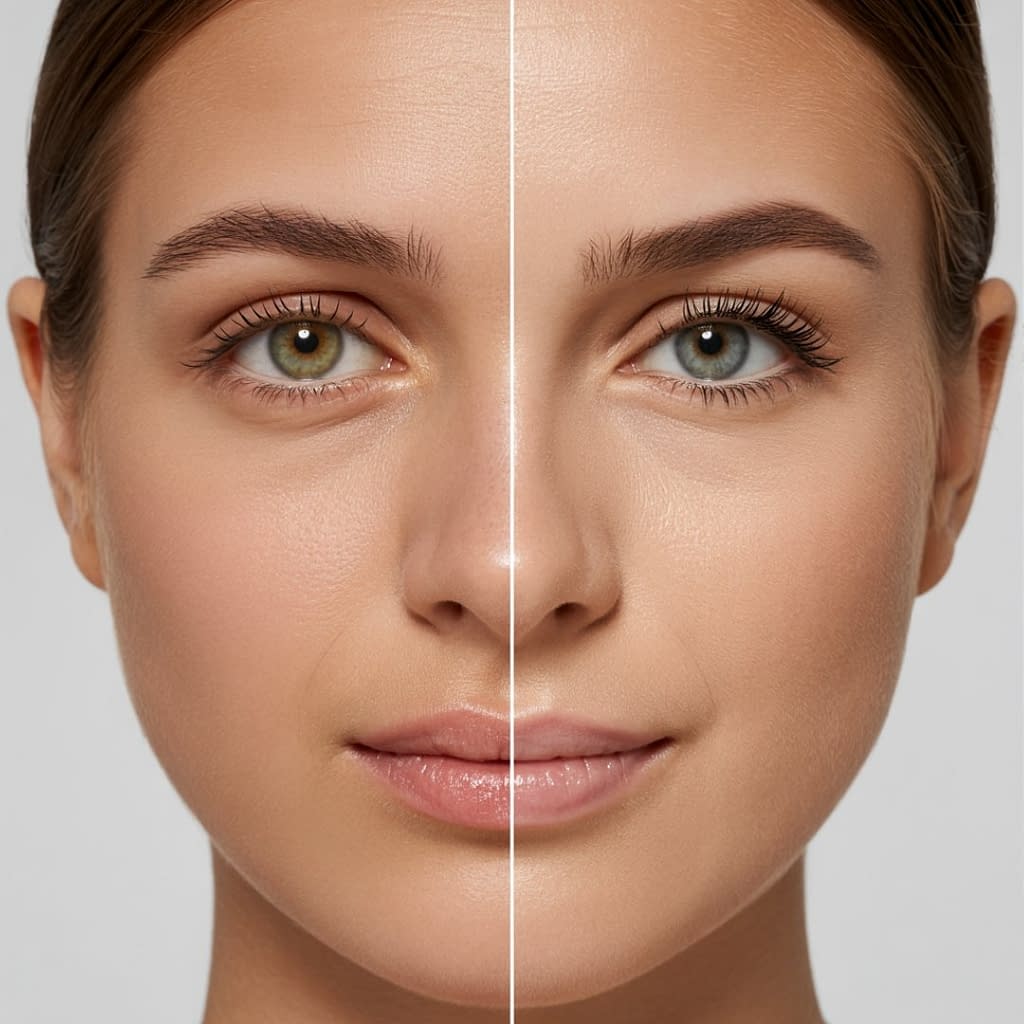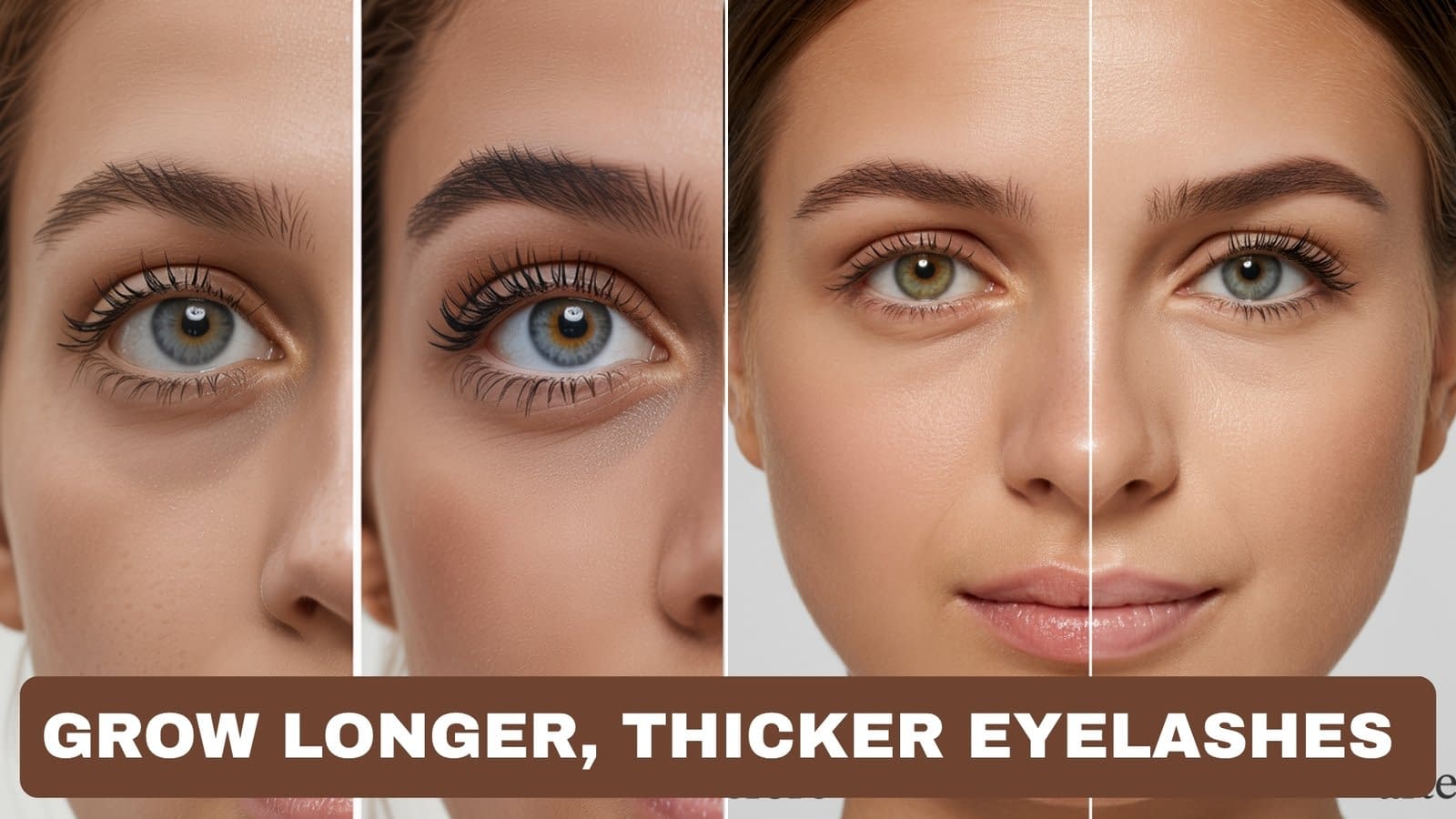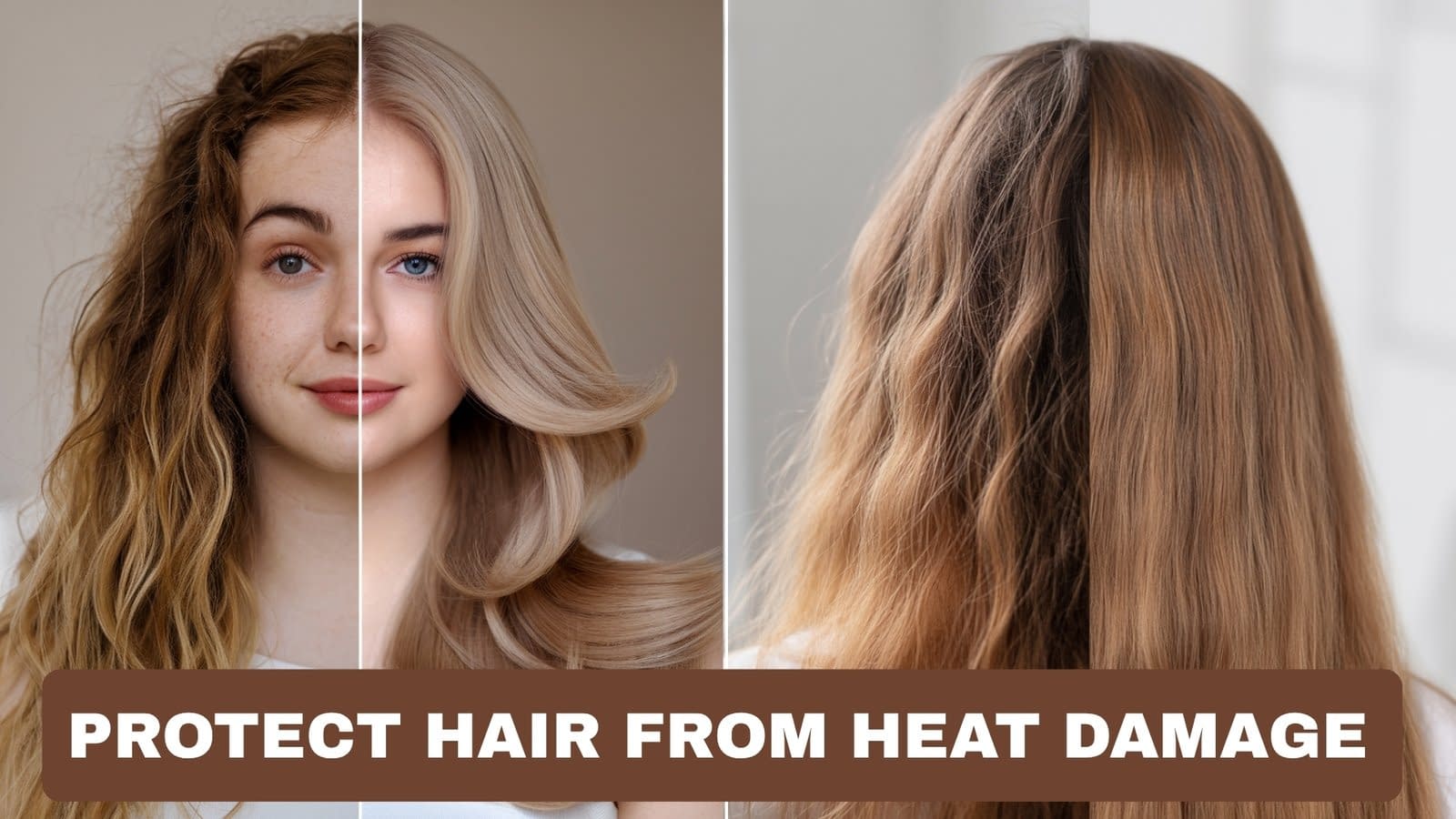Long, full lashes aren’t just a beauty ideal — they also protect your eyes by catching dust and debris. Many people want thicker, longer eyelashes for both function and confidence. The good news: with gentle daily habits, nourishing foods, safe topical care, and patience, you can support healthier lash growth naturally. This guide gives a deep dive into causes of lash thinning, practical daily routines, natural oils and DIY serums, food and lifestyle tips, safe makeup removal, product suggestions, and clear signs for when to see a pro.
Read on — this is everything you need to build a safe, effective, natural lash-growth plan (step-by-step).
Why Eyelash Growth Matters
Eyelashes are more than a cosmetic feature. They:
- Protect the eye by triggering the blink reflex when particles approach.
- Help reduce evaporation from the eye surface.
- Framing the eye, they strongly influence how awake and youthful you look.
Because lashes naturally go through growth (anagen), transition (catagen), and rest (telogen) cycles, it’s normal to lose a few each day. But thinning, patchy loss, or much shorter lashes than usual can be distressing. A gentle, consistent approach focused on reducing damage and improving follicle health gives the best chance for fuller, longer lashes over time.
What Causes Thin or Short Eyelashes?

Understanding why lashes thin helps you fix the problem.
Common causes:
- Genetics & age — follicles slow with age, and genetic hair characteristics affect density and length.
- Excessive rubbing or pulling — rubbing eyes or habitually plucking/playing with lashes damages follicles.
- Harsh makeup and removers — waterproof mascaras and alcohol-heavy removers can dry lashes and require vigorous scrubbing to take off.
- Old/contaminated cosmetics — bacteria in old mascara can cause inflammation and lash fallout.
- Allergies or blepharitis — eyelid inflammation weakens follicles (see a doctor for diagnosis).
- Nutritional deficiencies — insufficient protein, iron, zinc, biotin, or essential fatty acids can impair hair growth.
- Stress and illness — telogen effluvium (stress-induced shedding) can affect lashes.
- Medications or medical conditions — certain meds or autoimmune issues can lead to lash loss.
If lash loss is sudden, patchy, or accompanied by eyelid redness, pain, or vision changes, see a healthcare professional promptly.
Daily Habits That Help Your Lashes Grow Faster
Small daily habits protect your lashes and encourage growth.
Step-by-step daily routine:
- Be gentle
- Pat, don’t rub, when touching the eye area. Avoid sleeping face-down on your cheek.
- Remove makeup carefully each night
- Use an oil-based cleanser or a micellar solution designed for eyes (detailed steps later).
- Avoid mechanical stress
- Don’t tug at mascara clumps; if mascara resists removal, soak and dissolve rather than scrub.
- Limit waterproof formulas
- Use waterproof only when needed; otherwise choose gentler formulations to ease removal.
- Keep lashes clean
- If you have oily eyelids or blepharitis, use a gentle eyelid cleanser or baby shampoo diluted with water to clean lids 2–3x/week (or as advised by a doctor).
- Sleep position & fabrics
- Sleep on clean pillowcases; silk or satin may reduce friction compared with cotton.
- Use a clean applicator
- When applying any serum or oil, use a sanitized spoolie or cotton swab — never dip applicators back into containers.
Consistency matters: adopt these habits every day and expect to wait 6–12 weeks (one full hair cycle) to see real change.
Natural Oils That Boost Eyelash Growth

Certain oils are popular for lash care because they condition, reduce breakage, and may support a healthier environment for follicles.
Safe, commonly used options:
- Castor oil (cold-pressed, hexane-free)
- Thick, rich in ricinoleic acid — widely used anecdotally to condition lashes and reduce breakage.
- Coconut oil
- Penetrates hair shaft, conditions, and may reduce protein loss; lighter than some but can be comedogenic for lid skin in some people.
- Jojoba oil
- Technically a liquid wax, very stable and similar to skin sebum; great as a carrier oil.
- Sweet almond oil / olive oil
- Nourishing and lighter; good for those who find castor too heavy.
- Vitamin E oil (tocopherol)
- Antioxidant; often added in tiny amounts to formulas to protect oils from rancidity and support lipid health.
How to apply safely (step-by-step)
- Patch test first
- Put a small amount on the inner forearm or behind the ear for 48 hours. If irritation or redness appears, don’t use around eyes.
- Use a clean applicator
- Pour a drop of oil onto a sterile dish or the cap (never back into the bottle). Dip a clean spoolie or cotton swab.
- Apply to the base of lashes (lash line), not the eyeball or inner waterline. A thin, even stroke across the roots is best — like applying eyeliner.
- Night application
- Apply once nightly after removing makeup. Let it sit overnight; gently wash off in the morning if desired.
- Start slowly
- Begin 2–3 nights a week, then increase to nightly if tolerated.
- Cleanliness
- Replace cotton/swab each time and keep bottles tightly sealed to avoid contamination.
Storage & shelf life
- Store oils in dark glass bottles in a cool place. Use within 6–12 months (castor and jojoba are quite stable; others vary). Discard oils that smell rancid.
Safety note: avoid using essential oils near the eye (peppermint, cinnamon, citrus) — they are highly sensitizing.
Homemade Eyelash Serum Recipes

If you prefer DIY, here are simple, low-risk serums using carrier oils. Always patch test.
Recipe A — Gentle Castor Oil Lash Serum (1 teaspoon / ~5 mL)
- 3.5 mL cold-pressed castor oil
- 1.0 mL jojoba oil (lighter carrier)
- 0.5 mL vitamin E oil (antioxidant)
Method:
- Sanitize a 5 mL amber dropper bottle and a small mixing utensil.
- Combine oils, cap, and roll between hands to mix.
- Apply nightly with a clean micro-spoolie or disposable mascara wand to lash roots.
- Store in cool, dark place. Shelf life ~6–9 months.
Recipe B — Lightweight Nourishing Lash Oil (for sensitive lids)
- 2.5 mL jojoba oil
- 2.5 mL sweet almond or fractionated coconut oil
Method:
- Mix in a sanitized tin or dropper bottle. Apply nightly. This is lighter and less likely to cause lids to feel greasy.
Recipe C — Conditioning Lash Booster (with aloe infusion) — use caution
- Some DIYs include aloe juice — do not add water or aloe juice to an oil base unless you have a preservative and understand microbiology; water-based mixes grow bacteria. If you want aloe benefits, use a commercial stabilized aloe extract or skip it.
Important DIY safety rules
- No water-based ingredients without a preservative (risk of eye infection).
- Keep batches small (5–15 mL) to maintain freshness.
- Label with date made and discard after 6 months or earlier if odor changes.
- Stop use if irritation, redness, swelling, or itchy eyes occur.
Foods That Strengthen Eyelashes From the Inside Out
Lash health depends on whole-body nutrition. Aim for a balanced diet with these highlights:
Key nutrients & sample foods:
- Protein — hair is keratin (protein). Eat eggs, lean meats, fish, legumes, and dairy.
- Biotin (B7) — supports healthy hair. Sources: eggs, nuts, seeds, sweet potatoes, oats. (Supplements optional; consult a provider.)
- Iron — low iron can impair hair growth. Sources: red meat, spinach, lentils, fortified cereals.
- Zinc — supports cell repair. Sources: oysters, beef, pumpkin seeds.
- Omega-3 fatty acids — reduce inflammation and support hair shafts. Sources: salmon, sardines, chia, flaxseed.
- Vitamin C — supports collagen and iron absorption. Sources: citrus, strawberries, bell peppers.
- Vitamin A & beta-carotene — supports epithelial health. Sources: sweet potatoes, carrots, leafy greens.
Practical daily plan:
- Have a protein-rich breakfast (eggs + whole grain) to supply amino acids for the day.
- Include at least one fatty-fish meal per week or consider a fish-oil supplement if diet lacks omega-3s.
- Snack on nuts and seeds for zinc and healthy fats.
- If you suspect deficiency (pale gums, fatigue, hair shedding), get blood tests before supplementing.
Supplements can help when diet is insufficient, but don’t megadose — check with your healthcare provider first.
Eyelash Care Mistakes You Should Avoid
Avoid these common pitfalls that damage lashes:
- Sleeping with mascara — clogs follicles and makes lashes brittle. Always remove makeup.
- Using old mascara — replace mascara every 3 months to avoid bacteria buildup.
- Aggressive rubbing — whether removing mascara or rubbing tired eyes, friction breaks lashes and irritates follicles.
- Overuse of heated curlers or harsh mechanical curlers — can break lashes if used on dry, brittle lashes or too forcefully.
- Frequent eyelash extensions or heavy adhesive use — extensions can stress natural lashes; give breaks between sets.
- Plucking lashes — pulling individual lashes weakens the follicle and risks permanent damage.
If you must use extensions or tinting/perm services, seek reputable technicians and allow recovery time afterward.
Safe Ways to Remove Eye Makeup Without Losing Lashes

Gentle removal is essential.
Step-by-step gentle removal:
- Choose a gentle remover — oil-based cleansers, cleansing balms, or micellar water designed for eyes.
- Soak clean cotton pads — saturate a pad and hold it over closed eye for 10–20 seconds to dissolve mascara rather than scrubbing.
- Swipe downward and outward — follow lash direction; don’t rub back-and-forth.
- For waterproof mascara — use a dedicated waterproof remover and allow it to soak longer before gentle swiping.
- Double cleanse (optional) — follow with a mild face cleanser if you like to ensure no residue remains.
- Pat dry — gently dab the area with a soft towel and apply any serums or oils afterward.
Avoid facial cleansers with harsh sulfates or strong alcohols around the eye area.
Growth-Boosting Products Worth Trying
If natural oils and diet aren’t enough, some non-prescription products can support lash appearance and health. Look for products with these supportive ingredients (avoid products with known irritants if you have sensitive eyes):
Helpful ingredients:
- Peptides (myristoyl pentapeptide, etc.) — can signal follicles to support healthy hair.
- Panthenol (provitamin B5) — conditions hair and improves flexibility.
- Hyaluronic acid — hydrates the lash line skin.
- Biotin, niacinamide (B3) — support hair health in topical formulations.
- Hypoallergenic prostaglandin-free serums — marketed as lash conditioners; read labels and patch test.
Shopping tips:
- Choose ophthalmologist-tested, preservative-stabilized serums.
- Avoid products with high fragrance, essential oils, or alcohol that sting.
- Start with a sample or small bottle and patch test before nightly use.
Note: Prescription options (e.g., prostaglandin analogues) exist and are effective for lash growth — consult an ophthalmologist or dermatologist for medical treatment options and risks.
When to See a Professional for Eyelash Concerns

See a doctor if you notice:
- Rapid or sudden lash loss (over days)
- Patchy bald spots on the lash line
- Redness, pain, swelling, or discharge from eyelids (possible infection)
- Changes in vision or persistent eye irritation
- If blepharitis or dermatitis is suspected — medical treatment helps reduce inflammation and protect follicles
A dermatologist or ophthalmologist can check for underlying causes (autoimmune conditions, nutrient deficiencies, infections) and recommend prescription treatments if appropriate.
Final Tips for Naturally Long, Thick Lashes
Short recap and practical tips:
- Be patient — lashes grow slowly; expect 6–12 weeks to notice change.
- Be gentle — the single most important rule: avoid rubbing and harsh removal.
- Daily care — clean lids, remove makeup gently, and apply conditioning oils/serums nightly.
- Eat well — a nutrient-rich diet supports internal hair health.
- Use clean tools — change mascara every 3 months; use clean applicators.
- Limit damaging services — give lashes breaks from extensions and perms.
- Track progress — take a “before” photo and re-check every 6–8 weeks to notice subtle gains.
Final Words
Growing longer, thicker eyelashes naturally is a cumulative process. The best results come from combining low-damage daily habits (gentle cleansing, careful makeup removal), targeted topical care (safe oils or conditioners), good nutrition, and a little patience. Avoid risky DIYs involving harsh chemicals or unpreserved water-based mixtures around the eye. If you experience sudden or severe loss, inflammation, or infection — see a doctor.








